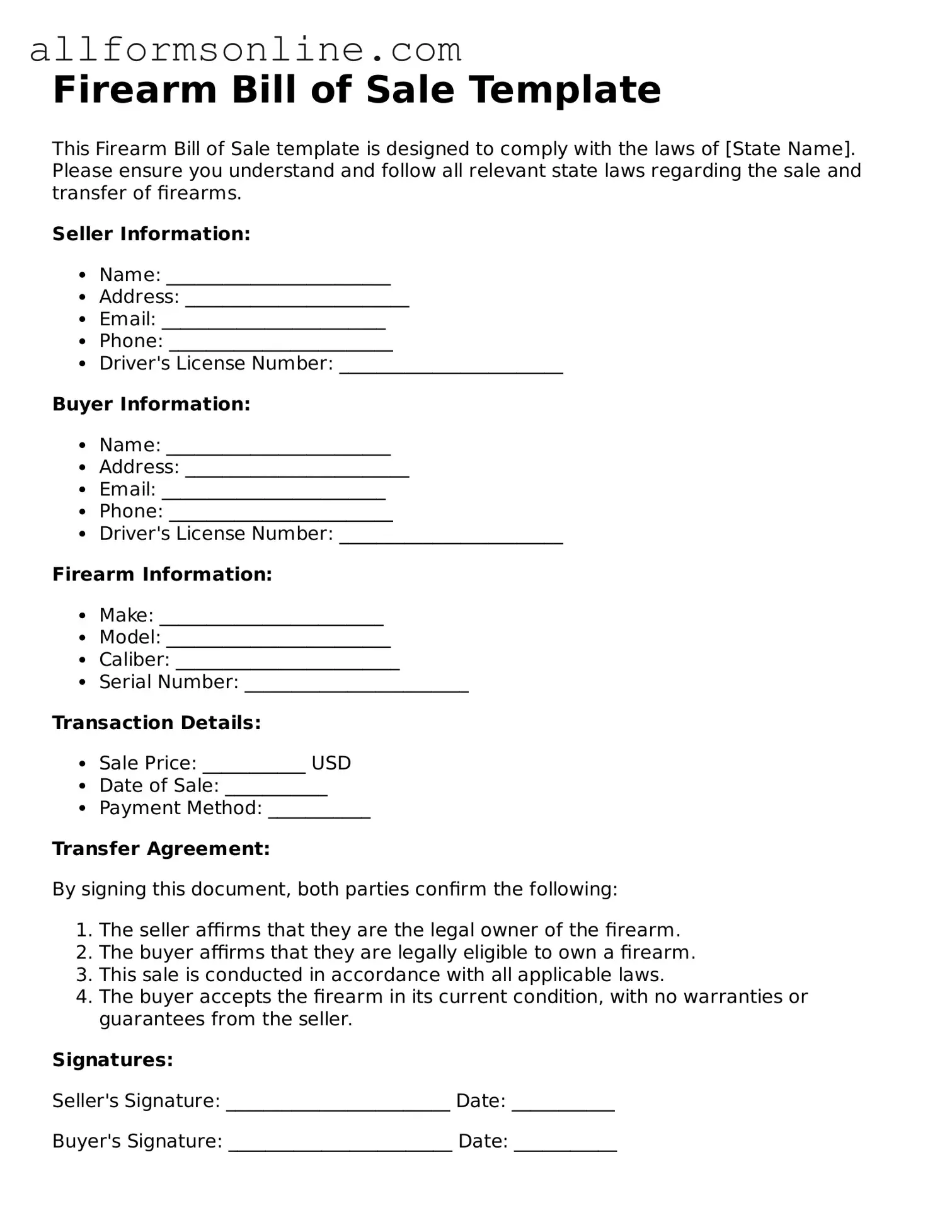What is a Firearm Bill of Sale?
A Firearm Bill of Sale is a legal document that records the sale or transfer of a firearm between two parties. It includes essential details such as the names and addresses of both the buyer and seller, a description of the firearm, and the date of the transaction. This document serves as proof of ownership and can be useful for both parties in case of future disputes.
Is a Firearm Bill of Sale required by law?
Whether a Firearm Bill of Sale is required depends on state laws. Some states mandate a bill of sale for all firearm transactions, while others do not. Even if it’s not legally required, having one is highly recommended. It provides a clear record of the sale and can help protect both the buyer and seller in legal matters.
What information should be included in the Firearm Bill of Sale?
Essential information includes the names and addresses of both the buyer and seller, the date of the transaction, a detailed description of the firearm (including make, model, caliber, and serial number), and the purchase price. Both parties should sign the document to validate the transaction. It's also a good idea to include a statement confirming that the buyer is legally allowed to own a firearm.
Can I create my own Firearm Bill of Sale?
Yes, you can create your own Firearm Bill of Sale. However, ensure that it includes all the necessary information to protect both parties. Many online templates are available to help you draft a comprehensive bill of sale. Just be sure to check your state’s specific requirements to ensure compliance with local laws.
What should I do with the Firearm Bill of Sale after the transaction?
After completing the transaction, both the buyer and seller should keep a copy of the Firearm Bill of Sale for their records. This documentation can be important for future reference, especially if there are questions about ownership or if the firearm is involved in any legal issues. Storing it in a safe place is advisable.
